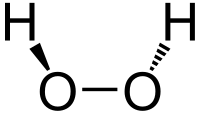
Photo from wikipedia
Naturally occurring coumarins are a group of compounds with many documented central nervous system (CNS) activities. However, dihydrofuranocoumarins have been infrequently investigated for their bioactivities at CNS level. Within the… Click to show full abstract
Naturally occurring coumarins are a group of compounds with many documented central nervous system (CNS) activities. However, dihydrofuranocoumarins have been infrequently investigated for their bioactivities at CNS level. Within the frame of this study, an efficient liquid–liquid chromatography method was developed to rapidly isolate rutamarin from Ruta graveolens L. (Rutaceae) dichloromethane extract (DCM). The crude DCM (9.78 mg/mL) and rutamarin (6.17 µM) were found to be effective inhibitors of human monoamine oxidase B (hMAO-B) with inhibition percentages of 89.98% and 95.26%, respectively. The inhibitory activity against human monoamine oxidase A (hMAO-A) for the DCM extract was almost the same (88.22%). However, for rutamarin, it significantly dropped to 25.15%. To examine the molecular interaction of rutamarin with hMAO- B, an in silico evaluation was implemented. A docking study was performed for the two enantiomers (R)-rutamarin and (S)-rutamarin. The (S)-rutamarin was found to bind stronger to the hMAO-B binging cavity.
Journal Title: Molecules
Year Published: 2020
Link to full text (if available)
Share on Social Media: Sign Up to like & get
recommendations!